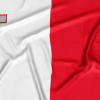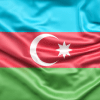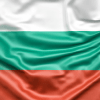About Poland

Population – 38 036 118 people.
The capital – Warsaw.
The national language – Polish. English is widely spoken among locals.
Poland is segmented into 16 administrative regions known as voivodeships.
Poland shares its borders with Russia, Lithuania, Belarus, Ukraine, Slovakia, the Czech Republic, and Germany. By the sea, the country board Denmark and Sweden.
Poland is a country in central Europe located at a geographic crossroads linking the forested lands of northwestern Europe to the sea lanes of the Atlantic Ocean and the fertile plains of the Eurasian frontier. Bounded by seven nations, Poland has waxed and waned over the centuries, buffeted by the forces of regional history. In the early Middle Ages, Poland’s small principalities and townships were subjugated by successive waves of invaders, from Germans and Balts to Mongols. In the mid-1500s, united Poland was the largest state in Europe and the continent’s most powerful nation.
By the turn of the 21st century, Poland was a market-based democracy, abundant in products of all kinds, and a member of both NATO (North Atlantic Treaty Organization) and the European Union (EU), allied more strongly with Western Europe than with eastern Europe but, as always, squarely between them.

Map
Probably no place in Poland is as well-known internationally as Warsaw. No wonder – as the capital, the largest city, and the location of some of the most infamous events of the Second World War, Warsaw has received plenty of exposure. Unlike some other cities in Poland, Warsaw was left mostly in ruins by 1945. The Russian occupation following the end of the war didn’t help matters, and for a long time life in Warsaw was known to be particularly tough compared to the rest of the country. Today, Warsaw has rejuvenated itself to an almost unbelievable extent. Not only its public infrastructure has improved, but culturally, the city is also more alive than ever. Warsaw hosts a renowned international jazz festival, a film festival, and many other local events year-round. It offers a beautiful old town and some of the finest places to eat in all of Poland.
The former capital of Poland, Kraków is one of the most popular destinations in the country for many travelers. It’s easy to see why – its old town is picturesque and combines architectural styles from the early Middle Ages up to 19th-century neoclassicism. Kraków is intertwined with many famous milestones of Polish history and folklore. There’s the legend of the great dragon that was said to live here in the 1300s. To this day, Wawel castle where the king of Poland reigned remains a major sight. Darker chapters of Poland’s history unfolded here. Kraków was the site of a major ghetto established during World War II, and Oskar Schindler’s factory was just outside of town. The Auschwitz concentration camp is about an hour away, remaining a somber monument to one of Europe’s darkest chapters. Visiting from Kraków is easy, though you should make sure you’re able to stomach it.

Cuisine
Polish cuisine is a rich and robust culinary tradition reflecting the country’s historical background, geography, and cultural influences. It encompasses a variety of dishes and ingredients that have developed over centuries, showcasing a mix of flavors and culinary styles. Speaking of Polish traditions, there’s no way this list would be complete without mentioning pierogi! If you’ve never tried them – stop reading right now and do yourself a favor. The little dumplings have made a name for themselves on every continent, but few people identify them as an aspect of the rich and unique Polish cuisine.
Another notable dish is bigos, known as “hunter’s stew”, composed of sauerkraut, fresh cabbage, and a combination of meats such as sausage, bacon, and occasionally beef or game meat. This hearty stew is a customary choice during celebratory events. Kielbasa, the collective term for Polish sausages, is made in various types and flavors. Typically seasoned with garlic, marjoram, and spices, kielbasa is employed both as a standalone item and as an ingredient in many Polish dishes. Zurek, a sour rye soup, is prepared from fermented rye flour, meat (often sausage), and sometimes potatoes and vegetables. Its distinct tangy taste is complemented by a hard-boiled egg when served.

Culture
The popularity of the internationally acclaimed Witcher series, spanning books, video games, and television shows, has catapulted Polish mythology into the mainstream. But beyond legends of scary monsters, classic Polish folklore has a lot to offer!
Poland is the only country in the world where Polish is the national and official language. As an EU member, Polish is also the official language of the Union. English is commonly used too!
Foreigners are quick to point out just how hard Polish can be to learn as a beginner. If you already speak a language Polish is closely related to, such as Czech, you might have a different view. However, for most, Polish remains very tough to master indeed.
What makes Polish so unique is that it features many sounds not found in almost any other language. More than that, it uses a modified Latin alphabet to represent these sounds – unlike even most other Slavic tongues.

Climate
The distinctive climate and picturesque beaches and cliffs along Poland’s Baltic coastline have garnered considerable attention. Certain areas, safeguarded as national parks, exhibit these natural wonders.
Although the warmer months prevail, the Baltic coast is susceptible to rather chilly temperatures. Venturing into the waters might be reserved for enthusiasts of cold-water swimming. Nevertheless, the breathtaking vistas compensate for this factor.
The coastal allure isn’t limited solely to the mainland. The Baltic region also boasts numerous Polish islands, renowned for hosting some of Europe’s most exceptional spas and resorts.

Economy
The Polish economy has shown remarkable growth and development since transitioning from a centrally planned system to a market-oriented one in the early 1990s. This growth is particularly evident in its diverse sectors, which include manufacturing, services, agriculture, and technology. It is a member of the G20, the Organization for Economic Cooperation and Development (OECD), the United Nations (UN), the World Trade Organization (WTO), and many other international bodies. The Polish zÅ‚oty (PLN) serves as the country’s currency, with the National Bank of Poland (NBP) managing its monetary policy.

Religion
Poland is characterized by its predominantly Roman Catholic population, with a significant portion actively practicing their faith. While the nation doesn’t designate an official religion, it stands out as one of the most homogeneously Catholic countries globally. The Roman Catholic Church in Poland holds considerable societal reverence and wields notable political sway, reflecting its profound influence on the country’s cultural and political fabric.


















